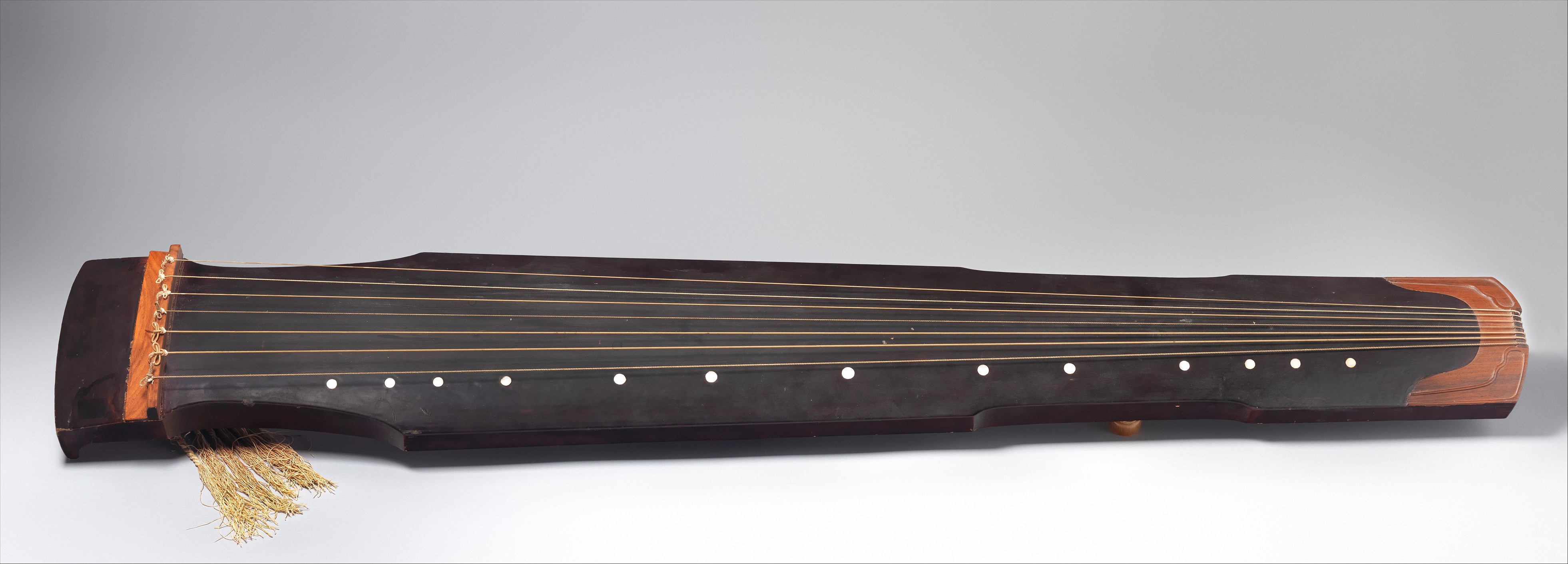Introduction
The Guqin, with its seven strings and ancient history, offers a unique journey for anyone willing to explore its depths. Unlike modern instruments that often rely on precision and speed, the Guqin calls for a deep connection between player and instrument, emphasizing a meditative, introspective approach to music. This guide will help you start your journey, offering step-by-step instructions and tips for beginners eager to explore the art of playing this ancient Chinese zither.

Chinese
19th century
What You Need to Get Started
Before you begin your first note, it’s important to ensure you have the right tools and environment:
- A Guqin: You can find beginner-friendly instruments online or at specialized music stores. Be sure to choose one with a good sound and proper craftsmanship.
- A Quiet Space: The Guqin is an introspective instrument. Choose a place to play where you can focus without distractions.
- Resources: Some excellent resources to get started include:
- Online Tutorials: YouTube offers a variety of lessons for beginners.
- Books: “The Lore of the Chinese Lute” by Robert H. van Gulik is a great place to start.
Basic Techniques: How to Play Guqin
Learning the Guqin is about mastery of the touch. The following are some key techniques:
- Tiao (挑): This is an outward plucking motion, akin to a soft stroke. It’s the basic pluck to produce an open string sound.
- Mo (抹): An inward plucking motion, giving a different tonal quality. Mastering Mo is essential for controlling the range of tones.
- Zhu (注): A technique of sliding your fingers between notes, creating a flowing sound that is unique to the Guqin.
- Yin (吟) and Rou (揉): These vibrato techniques add expressiveness and nuance to your performance, similar to the emotional inflection in spoken language.
Basic Songs for Beginners
Once you’ve familiarized yourself with the basic techniques, it’s time to try some simple tunes. “Farm in Shen and Fish in Wei” (耕莘钓渭) is a perfect piece for beginners. Here’s how to get started with it:
Notice: All rights reserved.
- Familiarize Yourself with the Notation: Guqin notation is different from Western musical notation. It uses “Guwen” (古文), a system of dots and lines that represent pitches and fingering positions.
- Slow Practice: Start by playing slowly. This allows your fingers to adjust to the instrument and for you to perfect each note.
- Focus on Tone Quality: As you play, focus on producing a pure, resonant sound rather than speed. Guqin is about the quality of the note, not the quantity.
Caring for Your Guqin
Taking care of your instrument is essential for preserving its sound quality:
- Clean Your Guqin Regularly: Dust and dirt can affect the tone. Use a soft cloth to wipe it down after each session.
- Avoid Moisture: Store your Guqin in a dry environment, as humidity can damage the wood and strings.
- String Care: Regularly check the strings for wear and tear. Replace them when necessary, using traditional silk strings for an authentic experience.
Common Challenges for Beginners
As with any instrument, there will be challenges along the way. Here are a few common obstacles:
- Tuning: Tuning the Guqin can be tricky, especially for beginners. Use an electronic tuner to help ensure your strings are at the right pitch.
- Hand Strength: The Guqin requires precise finger movements. Initially, you may experience hand fatigue. Don’t worry, as this is a natural part of building strength and technique.
Conclusion
The Guqin offers a profound, meditative musical experience that connects the past with the present. By mastering its techniques and learning its history, you can open a new world of sound and cultural understanding. Whether you are playing for personal enjoyment or seeking to connect with ancient Chinese traditions, the Guqin will provide you with an enriching musical journey.
If you’re eager to continue learning, check out our guide on What is Guqin?